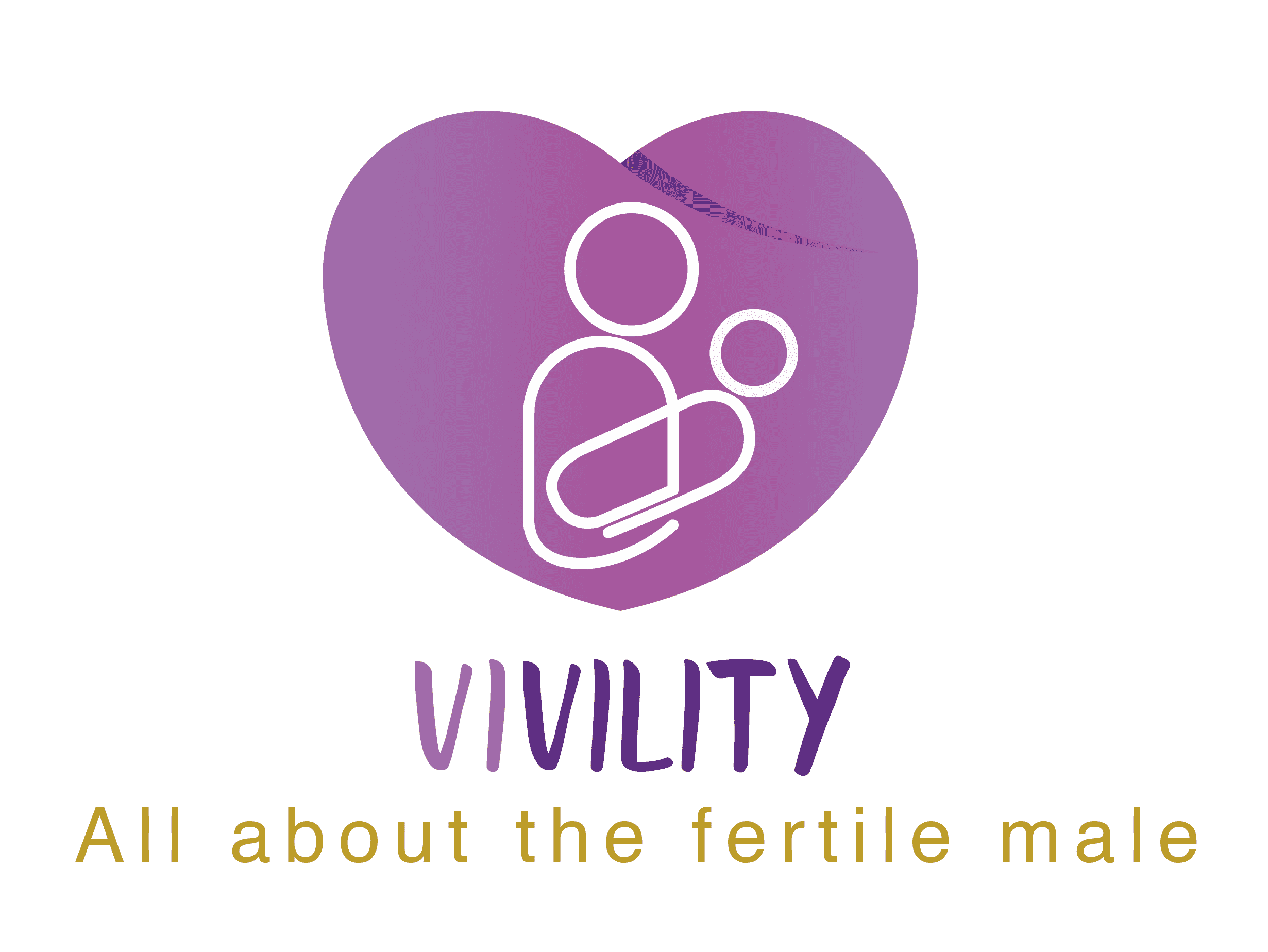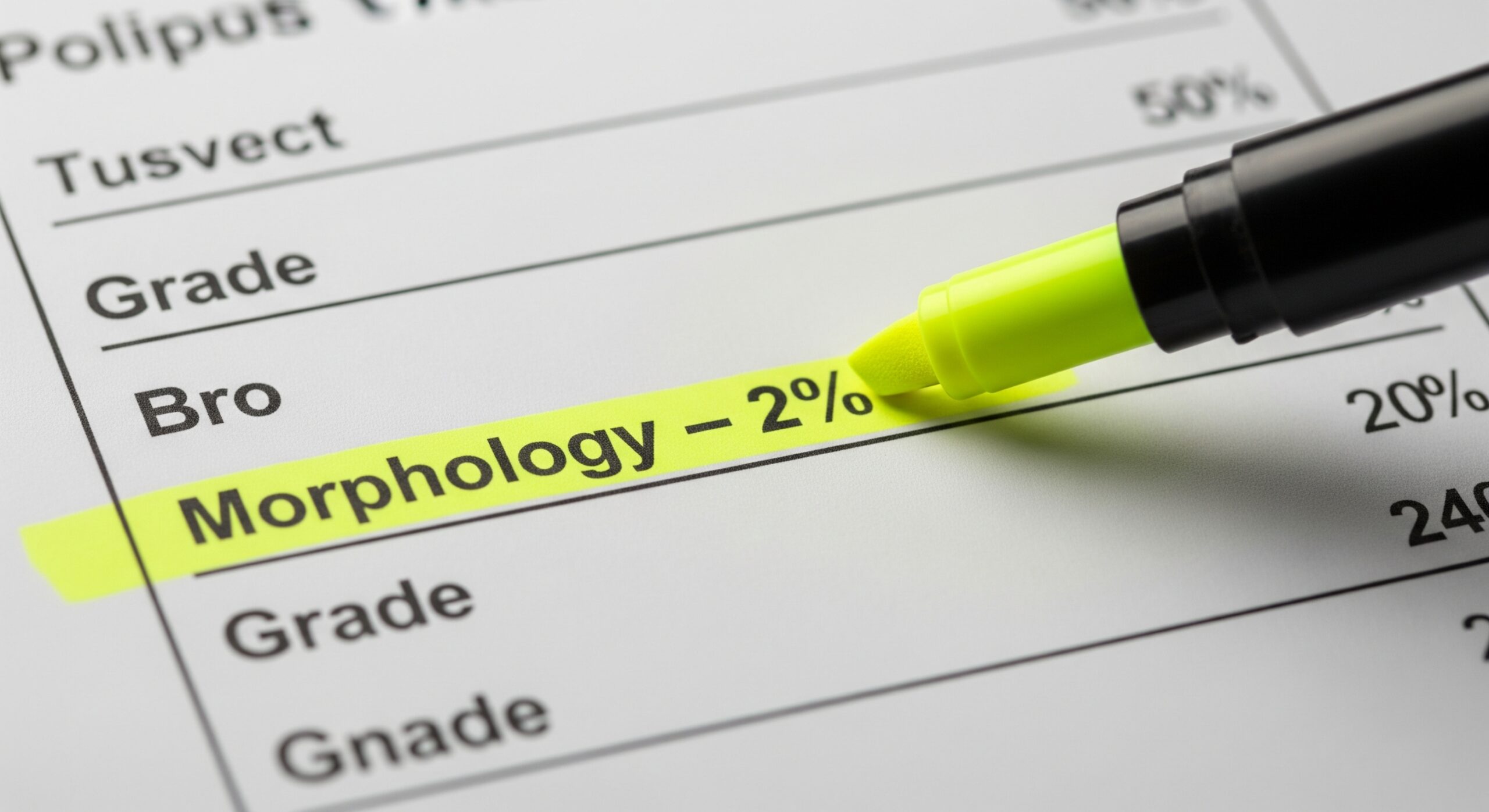Heard the term poor sperm morphology and not sure what it really means? You’re not alone. Morphology refers to the shape and structure of sperm—and yes, it matters. Abnormally shaped sperm can have a harder time reaching and fertilizing an egg, but here’s the good news: it’s not the end of the road for fertility.
Many men with low morphology still go on to become dads, naturally or with a little help. In this article, we’ll break down what sperm morphology is, what causes it, how it’s tested, and what steps you can take to improve it. Let’s make it simple.
Understanding Poor Sperm Morphology
Sperm morphology refers to the size and shape of sperm. It is a critical parameter in evaluating male fertility. The structure of sperm includes the head, midpiece, and tail, each playing a vital role in fertilization. Abnormalities in any of these parts can affect the sperm’s ability to fertilize an egg.
Normal vs. Abnormal Sperm Shape
Normal sperm have an oval head and a long tail, which helps them swim efficiently. Abnormal sperm may have defects such as a misshapen head or a crooked tail, which can hinder their movement and ability to penetrate an egg. The World Health Organization considers a normal sperm morphology rate to be 4% or higher.
Importance of Sperm Morphology in Fertility
Sperm morphology is crucial because it affects the sperm’s ability to reach and fertilize an egg. Poor sperm morphology can lead to difficulties in conceiving naturally. It is often evaluated alongside other parameters like sperm count and motility to assess overall male fertility.
- Sperm morphology affects fertilization success.
- Abnormal shapes can hinder sperm movement.
- Evaluated with other sperm parameters for fertility assessment.
Causes of Poor Sperm Morphology
Genetic Factors
Genetic abnormalities can lead to poor sperm morphology. Conditions like Klinefelter syndrome or Y chromosome microdeletions can affect sperm production and shape. These genetic issues are often inherited and can significantly impact fertility.
Environmental Influences
Exposure to harmful environmental factors can negatively affect sperm morphology. Pollutants, radiation, and chemicals like pesticides can lead to abnormal sperm development. These factors can damage the DNA within sperm, leading to fertility issues.
Lifestyle Choices
Unhealthy lifestyle choices, such as smoking, excessive alcohol consumption, and drug use, can contribute to poor sperm morphology. These habits can affect hormone levels and lead to the production of abnormal sperm. Maintaining a healthy lifestyle is crucial for optimal sperm health.
- Genetic conditions can affect sperm shape.
- Environmental toxins can damage sperm.
- Lifestyle choices impact sperm morphology.
Diagnosing Sperm Morphology Issues
Semen Analysis
A semen analysis is the primary test used to evaluate sperm morphology. It involves examining a sample of semen under a microscope to assess the shape and structure of sperm. This test provides valuable information about a man’s fertility status.
Interpreting Morphology Results
Interpreting sperm morphology results requires understanding the percentage of normal-shaped sperm. A lower percentage indicates a higher likelihood of fertility issues. Results are often compared to WHO standards to determine normalcy.
Other Relevant Sperm Parameters
In addition to morphology, other sperm parameters like count and motility are assessed during a semen analysis. These factors provide a comprehensive view of a man’s fertility potential. Abnormalities in any of these areas can affect the chances of conception.
- Semen analysis evaluates sperm shape.
- Results compared to WHO standards.
- Other parameters include count and motility.
Impact of Poor Sperm Morphology on Fertility
Fertilization Challenges
Poor sperm morphology can lead to challenges in fertilization. Abnormal sperm may struggle to swim through the female reproductive tract or penetrate the egg. This can result in lower chances of natural conception.
Pregnancy Rates
Men with poor sperm morphology often experience lower pregnancy rates. A study in the Journal of Assisted Reproduction and Genetics found a 7.6% lower chance of achieving pregnancy compared to those with normal morphology. This highlights the importance of morphology in successful conception.
Correlation with Other Sperm Factors
Poor sperm morphology often correlates with other sperm abnormalities, such as low motility or count. These combined factors can further reduce fertility potential. Addressing all aspects of sperm health is essential for improving fertility outcomes.
- Abnormal sperm struggle with fertilization.
- Lower pregnancy rates linked to poor morphology.
- Correlates with other sperm abnormalities.
Treatment Options for Poor Sperm Morphology
Lifestyle Modifications
Improving lifestyle choices can enhance sperm morphology. Quitting smoking, reducing alcohol intake, and maintaining a healthy weight can positively impact sperm health. These changes can lead to better fertility outcomes.
Nutritional Supplements
Certain nutritional supplements, like zinc and folic acid, can improve sperm morphology. These supplements support overall sperm health and can increase the percentage of normal-shaped sperm. Consulting a healthcare provider is recommended before starting any supplement regimen.
Medical Interventions
Medical interventions, such as hormone therapy, can address underlying issues affecting sperm morphology. These treatments aim to balance hormone levels and improve sperm production. A fertility specialist can provide guidance on appropriate medical options.
Assisted Reproductive Technologies
Assisted reproductive technologies (ART) like IVF and ICSI can help overcome poor sperm morphology. These techniques involve directly manipulating sperm and eggs to facilitate fertilization. ART offers hope for couples struggling with male factor infertility.
- Lifestyle changes improve sperm health.
- Supplements support normal sperm shape.
- Medical treatments address hormonal issues.
- ART assists in overcoming morphology challenges.
Improving Sperm Morphology Naturally
Diet and Exercise
A balanced diet and regular exercise can improve sperm morphology. Foods rich in antioxidants, like fruits and vegetables, support sperm health. Exercise helps maintain a healthy weight and reduces stress, both of which benefit sperm quality.
Stress Management
Managing stress is crucial for improving sperm morphology. High stress levels can affect hormone balance and sperm production. Techniques like meditation and yoga can help reduce stress and promote better sperm health.
Avoiding Toxins and Harmful Substances
Avoiding exposure to toxins and harmful substances is essential for maintaining healthy sperm morphology. Limiting contact with chemicals, pollutants, and radiation can prevent damage to sperm. This proactive approach supports overall reproductive health.
- Healthy diet and exercise improve sperm.
- Stress reduction benefits sperm quality.
- Avoiding toxins prevents sperm damage.
Advanced Fertility Treatments for Poor Sperm Morphology
Intracytoplasmic Sperm Injection (ICSI)
ICSI is a specialized fertility treatment for poor sperm morphology. It involves injecting a single sperm directly into an egg, bypassing natural fertilization barriers. ICSI increases the chances of successful fertilization and pregnancy.
In Vitro Fertilization (IVF)
IVF is another option for couples facing poor sperm morphology. It involves fertilizing an egg outside the body and then implanting it into the uterus. IVF can be combined with ICSI for better outcomes in cases of severe morphology issues.
Sperm Selection Techniques
Advanced sperm selection techniques can improve the success of fertility treatments. Methods like magnetic-activated cell sorting (MACS) select the healthiest sperm for use in ART. These techniques enhance the chances of successful fertilization and pregnancy.
- ICSI bypasses fertilization barriers.
- IVF offers an alternative for conception.
- Sperm selection improves treatment success.
Prognosis and Success Rates
Factors Affecting Outcomes
Several factors affect the success rates of treatments for poor sperm morphology. Age, overall health, and the severity of sperm abnormalities play a role. Addressing these factors can improve the chances of successful conception.
According to the American Society for Reproductive Medicine, male factor infertility, including poor sperm morphology, contributes to 40-50% of infertility cases. Understanding these statistics helps set realistic expectations for treatment outcomes.
Final Thoughts
Poor sperm morphology is a significant factor in male infertility, affecting the ability to conceive naturally. Understanding the causes, diagnosis, and treatment options is crucial for couples facing fertility challenges. By addressing lifestyle factors and exploring advanced fertility treatments, many couples can improve their chances of achieving a successful pregnancy.
FAQs
Can poor sperm morphology be improved?
Yes, poor sperm morphology can often be improved through lifestyle changes and medical interventions. Quitting smoking, eating a balanced diet, and taking specific supplements can enhance sperm health. Consulting a healthcare provider is essential for personalized advice.
What percentage of sperm morphology is normal?
According to the World Health Organization, a normal sperm morphology rate is 4% or higher. This means that at least 4% of sperm should have a normal shape for optimal fertility. Lower percentages may indicate potential fertility issues.
How does poor sperm morphology affect fertility?
Poor sperm morphology can significantly impact fertility by reducing the chances of successful fertilization. Abnormal sperm shapes can hinder movement and egg penetration. This can lead to lower pregnancy rates and challenges in conceiving naturally.


